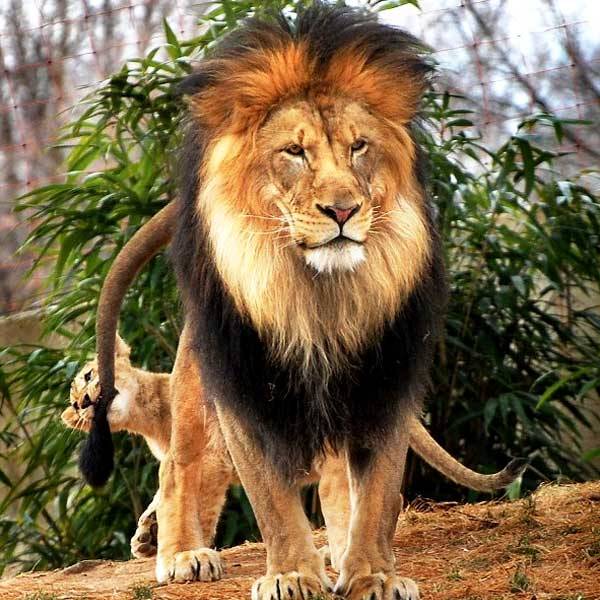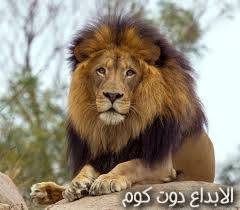
عالم الافاعي
الثعبان أو الأفعى أو الحية هو حيوان زاحف من ذوات الدم البارد يتبع رتيبة Serpentes من رتبة الحرشفيات له جسم متطاول، مغطى بحراشف، ولا توجد له أطراف، أو أذنين خارجيتين، وجفون ولكن ثمة حواف في جسمه، يعتقد أنها كانت تمثل أطرافه التي تلاشت
افاعي افريقيا
أضيف في:
30 أغسطس 2018
30 أغسطس 2018
مقطع فيديو من عالم الافاعي في الكائنات الحيّة
Snake Documentary DEADLIEST SNAKES LIVING IN AFRICA | National Geographic BBC Wild Documentary 2016 Snakes are elongated, legless, carnivorous reptiles of the suborder Serpentes[2] that can be distinguished from legless lizards by their lack of eyelids and external ears. Like all squamates, snakes are ectothermic, amniote vertebrates covered in overlapping scales. Many species of snakes have skulls with several more joints than their lizard ancestors, enabling them to swallow prey much larger than their heads with their highly mobile jaws. To accommodate their narrow bodies, snakes' paired organs (such as kidneys) appear one in front of the other instead of side by side, and most have only one functional lung. Some species retain a pelvic girdle with a pair of vestigial claws on either side of the cloaca. Living snakes are found on every continent except Antarctica, and on most smaller land masses; exceptions include some large islands, such as Ireland, Iceland, Greenland, the Hawaiian archipelago, and the islands of New Zealand, and many small islands of the Atlantic and central Pacific oceans.[3] Additionally, sea snakes are widespread throughout the Indian and Pacific Oceans. More than 20 families are currently recognized, comprising about 520 genera and about 3,600 species.[4][5] They range in size from the tiny, 10.4 cm (4.1 in)-long thread snake[6] to the reticulated python of 6.95 meters (22.8 ft) in length.[7] The fossil species Titanoboa cerrejonensis was 12.8 meters (42 ft) long.[8] Snakes are thought to have evolved from either burrowing or aquatic lizards, perhaps during the Jurassic period, with the earliest known fossils dating to between 143 and 167 Ma ago.[9] The diversity of modern snakes appeared during the Paleocene period (c 66 to 56 Ma ago). The oldest preserved descriptions of snakes can be found in the Brooklyn Papyrus. زواحف-ثعبان-افعي-ثعابين-قوة-سم-هجوم-قوة-افلام-افلام وثائقية
الثعبان أو الأفعى أو الحية هو حيوان زاحف من ذوات الدم البارد يتبع رتيبة Serpentes من رتبة الحرشفيات له جسم متطاول، مغطى بحراشف، ولا توجد له أطراف، أو أذنين خارجيتين، وجفون ولكن ثمة حواف في جسمه، يعتقد أنها كانت تمثل أطرافه التي تلاشت
#زواحف_ثعبان_افعي_ثعابين_قوة_سم_هجوم_قوة_افلام_افلام_وثائقية
المزيد..
Snake Documentary DEADLIEST SNAKES LIVING IN AFRICA | National Geographic BBC Wild Documentary 2016 Snakes are elongated, legless, carnivorous reptiles of the suborder Serpentes[2] that can be distinguished from legless lizards by their lack of eyelids and external ears. Like all squamates, snakes are ectothermic, amniote vertebrates covered in overlapping scales. Many species of snakes have skulls with several more joints than their lizard ancestors, enabling them to swallow prey much larger than their heads with their highly mobile jaws. To accommodate their narrow bodies, snakes' paired organs (such as kidneys) appear one in front of the other instead of side by side, and most have only one functional lung. Some species retain a pelvic girdle with a pair of vestigial claws on either side of the cloaca. Living snakes are found on every continent except Antarctica, and on most smaller land masses; exceptions include some large islands, such as Ireland, Iceland, Greenland, the Hawaiian archipelago, and the islands of New Zealand, and many small islands of the Atlantic and central Pacific oceans.[3] Additionally, sea snakes are widespread throughout the Indian and Pacific Oceans. More than 20 families are currently recognized, comprising about 520 genera and about 3,600 species.[4][5] They range in size from the tiny, 10.4 cm (4.1 in)-long thread snake[6] to the reticulated python of 6.95 meters (22.8 ft) in length.[7] The fossil species Titanoboa cerrejonensis was 12.8 meters (42 ft) long.[8] Snakes are thought to have evolved from either burrowing or aquatic lizards, perhaps during the Jurassic period, with the earliest known fossils dating to between 143 and 167 Ma ago.[9] The diversity of modern snakes appeared during the Paleocene period (c 66 to 56 Ma ago). The oldest preserved descriptions of snakes can be found in the Brooklyn Papyrus. زواحف-ثعبان-افعي-ثعابين-قوة-سم-هجوم-قوة-افلام-افلام وثائقية
الثعبان أو الأفعى أو الحية هو حيوان زاحف من ذوات الدم البارد يتبع رتيبة Serpentes من رتبة الحرشفيات له جسم متطاول، مغطى بحراشف، ولا توجد له أطراف، أو أذنين خارجيتين، وجفون ولكن ثمة حواف في جسمه، يعتقد أنها كانت تمثل أطرافه التي تلاشت
#زواحف_ثعبان_افعي_ثعابين_قوة_سم_هجوم_قوة_افلام_افلام_وثائقية



















 عالم الذباب
عالم الذباب
 عرين الاسد
عرين الاسد
 مملكة الغابة
مملكة الغابة
 عالم النسور
عالم النسور
 عالم الاسود
عالم الاسود
 هجرات عظمى
هجرات عظمى
 عالم الحيوان
عالم الحيوان
 اجمل طيور العالم
اجمل طيور العالم
 الحياة البرية
الحياة البرية
 عالم القرود - MONKEYS WORLD
عالم القرود - MONKEYS WORLD
 عالم الحيتان
عالم الحيتان
 محاضرات التنميه البشريه
محاضرات التنميه البشريه
 شرح برنامج الناشر المكتبي Microsoft Office Publisher
شرح برنامج الناشر المكتبي Microsoft Office Publisher
 معادلة النجاح
معادلة النجاح
 روعة الضوء
روعة الضوء
 كورس السيو لمصمم المواقع | تهيئة الموقع لمحركات البحث | السيو الداخلي
كورس السيو لمصمم المواقع | تهيئة الموقع لمحركات البحث | السيو الداخلي
 خواطر 1
خواطر 1
 كورس التسويق - Marketing Course
كورس التسويق - Marketing Course
 كورس مهارات التسويق - Marketing skills
كورس مهارات التسويق - Marketing skills
 يا ليتنى كنت معهم
يا ليتنى كنت معهم
 من تحت الصفر فى الجرافيك
من تحت الصفر فى الجرافيك
 طبيبة النساء
طبيبة النساء
 شرح الاربعون النووية
شرح الاربعون النووية
 تعلم تقنية asp.net
تعلم تقنية asp.net
 كورس الهندسة الوصفية
كورس الهندسة الوصفية
 Software Engineering هندسة البرمجيات
Software Engineering هندسة البرمجيات
 عالم الدببة
عالم الدببة
 دورة السي شارب كاملة
دورة السي شارب كاملة
 تعلم Access ⌨️ واعمل برنامج في دقائق 🕐
تعلم Access ⌨️ واعمل برنامج في دقائق 🕐
 English - اللغة الإنجليزية - الصف الثاني الثانوي - الفصل الدراسي الثاني
English - اللغة الإنجليزية - الصف الثاني الثانوي - الفصل الدراسي الثاني
 تعلم اللغة التركية مع رسلان ريحان (المستوى الخامسC1)
تعلم اللغة التركية مع رسلان ريحان (المستوى الخامسC1)
 برنامج : انطلق
برنامج : انطلق
 Oracle Apps Technical Consultant
Oracle Apps Technical Consultant
 المحاضرات الوحيدة لمعهد التشييد وإدارة المشروعات – الدارين
المحاضرات الوحيدة لمعهد التشييد وإدارة المشروعات – الدارين
 SQL English Course
SQL English Course
- التعليقات ومناقشات المبدعون (0) :